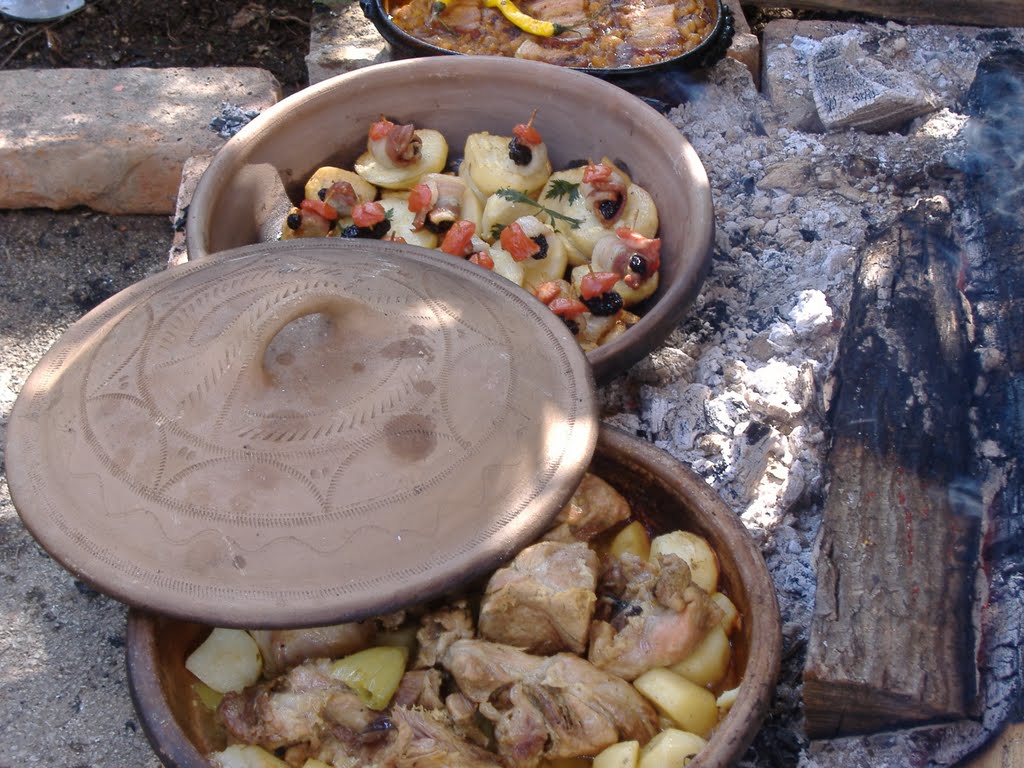Using the original recipe which is more than two centuries old, skilled artisans make Pirotski kackavalj (Hard cheese from Pirot), a very famous Serbian delicacy.
Pure milk from Stara planina and salt are the basic ingredients for this delicacy and the main secrets of its recognisable taste are the manual production and several months of ripening at a constant temperature.
Made from sheep milk, cow milk or the mixture of both? Tastes may differ, but one thing is certain – when you try this cheese you won’t remain indifferent. Rich and specific taste obtained by hand stirring and adding salt, make this delicacy, which adorned the tables of many Americans, Arabs, Greeks and Italians, truly special.

From 1946 in Pirot Dairy school skilled artisans alongside their stundens work on kackavalj making. This is the place where they learn the theory of cheesemaking and the secrets of the craft they have chosen.
Nowadays students from all over the country go to this school and apart from being taugh how to make Pirotski kackavalj they also learn about milk processing, how to make fruit yogurt, cheese and other dairy products made out of milk from Stara planina.
It is often said that it was the pastures of Stara planina and fresh air that made Pirotski kackavalj. There is definitely some truth in this statement. Sheep that graze on rich and grassy slopes of Stara planina produce domestic milk of the highest quality, from which this famous national brand is made.
Unfortunately, even though the recipe remained the same as it was two hundred years ago, nowadays there are considerably less sheep.
Back in the day there were around 22 000 sheep in some mountain villages of Stara planina, nowadays that number has decreased to 600 which is considerably lower. The main reasons for milk shortage are the uninhabited villages and fact that lambs became a tourist attraction on this mountain.
At least twelve liters of milk, salt, a certain temperature and molds are the things that are required to make one kilo of this cheese. First “baskija” is made (cheese that is yet to be processed) then comes the stirring and leveling (separating into equal parts). Leave it to sit for a while and repeat the process several times, after this is done put in in a mold. A few months of ripening on a constant temperature and occasional turning is required.
Around one hundred tons of authentic Pirot kackavalj is produced annually in Pirot Dairy school, this delicacy is protected by geographical indication, owing to the recipe which originated here long time ago. Because of the traditional recipe and the complex process of making it, Pirotski kackavalj made it to the list of intangible cultural heritage of Serbia.
The inhabitants of Pirot district were taught how to make kackavalj by so-called “Crnovunci” a Vlach nomadic tribe, who spent the time between spring and autumn on Stara planina pasturing their numerous sheep herds. The centuries that have passed have not changed the way it’s made. After these parts have been freed from the Ottoman rule, sheep rearing became very important and kackavalj production reached its peak between the downfall of Kingdom of Yugoslavia and the rise of Socialist Federal Republic of Yugoslavia.
This town is also famous for its kilims and Pirot “ironed” sausage. If you happen to visit this small town in southern Serbia, you will get the opportunity to familiarize yourself with some of the most famous national brands and to enjoy the beautiful surroundings and cultural richness.
Pirot kackavalj is popular all around the world
Citizens of Pirot often joke about how they won’t let anyone, who didn’t try their cheese, leave the city. However, people are persuaded easily enough to try it. Everyone who tried this delicacy, wanted to bring a few kilos of it back home.

People who usually buy this cheese are the inhabitants of Pirot and its surrounding areas.
There is a demand for this cheese in other cities as well; people from Serbia who had to leave their home country are showing an increased interest in it and tourists buy it too.
Considering that this cheese can last for up to two years, they gladly bring it back home and eat it there.
Also, there is an interest and demand for authentic, handmade products which are becoming more appreciated in modernized countries all over the world. In many Arab countries there is a demand for Pirotski kackavalj and there is an increasing interest in the European and American market.


























